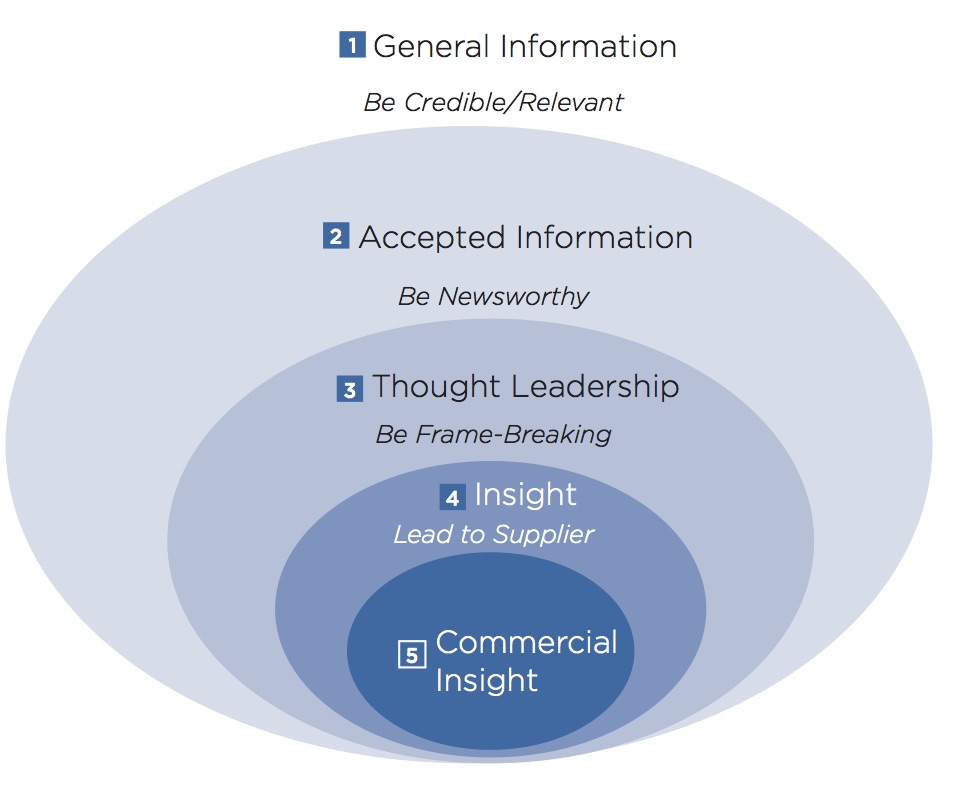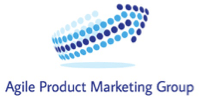MORE ORGANIZATIONS ARE LOOKING TO MARKETING TO SUPPORT AN INSIGHT SELLING MODEL :
I don't know if it's merely coincidence or because there's a growing recognition that the way complex technology products are sold must change; but a number of CEO's, sales leaders, and marketing executives I've spoken with lately have specifically brought up the Challenger Selling Model or have described issues that this model addresses. The conversation either starts with or leads to the need to improve their marketing (and more specifically what is usually considered product marketing) to provide support for this approach. They typically mention the need for "better information on our buyers to create more effective messages"
which translates to more or better vertical buyer profiling, buyer personas, buyer knowledge, customer segmentation and content marketing. This in turn relates back to the three pillars of the Challenger sale: target, teach and tailor -and each one requires significant support from marketing in a way that many marketing organizations may not be prepared to deliver because they lack the time and/or expertise.
Challenger Selling:

1. Target - Targeting based on the potential for change, not to buy. Focus on individuals that can act quickly and decisively, that are not paralyzed by structures or relationships that hamper change who will actively champion your offering.
2. Teach- Delivering commercial insights that re-frames the way customers think about their business and their needs. Teaching customers something new, thought provocative, and valuable about how to compete in their market.
3. Tailor - Communicate sales messages in the context of the customer, focusing on customer value drivers, economics and performance indicators. Messages must be tailored to different types of functions and individuals within an organization.
So what's new? Haven't we always done this? Traditional wisdom has been to target the C-Level and "sell high" but with an average of 4.5 people involved in the buying decision that doesn't work. The organization requires consensus and the "mobilizers" that are your product champions may not be in the C-Suite. The rep’s ability to influence the sale in the executive suite is nowhere near as strong as stakeholders’ ability to do the same thing.
But developing that product champion requires education and if the rep isn’t able to convince the customer that the problem is urgent, then he won’t be able to convince the customer it’s worth solving. To accomplish this a challenger needs a deep understanding of the customer’s business and uses that understanding to push the customer’s thinking and teach them something new about how their company can compete more effectively.
Far too often the message is focused on the product (not the buyer's problems) and it references features and benefits without regard for the specific audience that message is being delivered to. Tailoring requires messages addressing challenges and concerns facing the vertical, company, and individual buyer roles which can be delivered to a specific persona as a set of problems and solutions. As well as anticipating and accounting for where conflicts may arise within the customer organization which prevent them from reaching a consensus.
CONCLUSION:
Marketing must be laser focused on these goals throughout the buying cycle and must serve as the “insight generation machine” that generates content and keeps reps well equipped with quality teaching material that customers will find compelling. Marketing can add a tremendous amount of value by providing customer segmentation and by helping sales reps to "tailor" at the industry, company and persona level.
Take a deeper dive with these guides:


